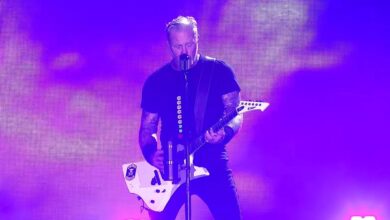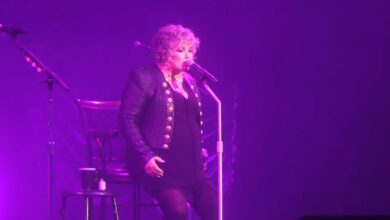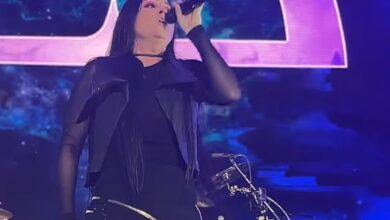KISS Sets The Midnight Special Ablaze: How “Deuce” Transformed Late-Night Television Into Rock Legend and Etched Ace Frehley’s Legacy in Eternity
The Midnight Special was more than a television appearance—it was a rite of passage. By the spring of 1975, KISS had all the ingredients: the riffs, the look, the confidence, and a live show that left clubs shaking. What they lacked was a national moment to unleash that chaos on America’s sleepless hearts. That opportunity arrived at NBC’s Burbank Studios, where the band rolled in with crates of flashpots, towering boots, and one relentless track called “Deuce.” Late-night viewers expecting disco rhythms or soft rock crooners suddenly found themselves face-to-face with four masked figures who looked like a comic book set on fire. It wasn’t just a concert; it was a statement that rock could be theater and thunder at once.
The cameras began rolling on April 1, 1975—an April Fool’s Day recording with zero jokes. KISS performed four blistering numbers that night: “Deuce,” “She,” “C’mon and Love Me,” and “Black Diamond.” Only three made it to air, though the visual impact of all four remains mythic. Even with the sound muted, you could read the music in their movements. Those sharp turns, unified steps, and synchronized gestures felt choreographed yet spontaneous—a perfect collision of chaos and control. For a program built on pop and funk, this was a new cinematic energy: heavy music filmed with the discipline of a dance troupe.
When “Deuce” aired on July 11, 1975, it didn’t merely entertain; it erupted. The TV audience witnessed Paul Stanley slicing the rhythm like a fencer, Gene Simmons pumping his bass like machinery, Peter Criss snapping his snare in relentless tempo, and Ace Frehley letting sparks fly from his chrome Les Paul. The living rooms of America became mini arenas as teens turned up their sets to eleven. Each bar of that riff felt like an ignition, an open invitation to speed toward something louder and freer than television had ever dared to broadcast.
What made “Deuce” so magnetic wasn’t just its sonic aggression—it was its editing-by-dynamics structure. Verse to chorus to bridge, every section felt timed like a scene change, each musician carving their space in the mix as if composing for film. Gene’s stance locked the shot in place, Paul drove the crowd with showman precision, and Ace painted melodies between the rhythmic punches. Instead of endless notes, he used silence as punctuation, turning gaps into breathing room. The result was music sculpted for television speakers yet powerful enough to feel like it could split them in half.
The unseen crowd in Burbank completed the illusion. Though studio audiences were small and seated, KISS performed as if Madison Square Garden were watching. Every kick, every pyro flash carried the weight of arenas they hadn’t yet conquered. Their confidence made the small soundstage feel infinite, transforming a taped segment into prophecy. The echoes of that night foretold what would soon fill hockey rinks and stadiums: thick fog, flashing lights, and an army of fists punching time to the beat. The performance hinted that television would soon be too small for KISS’s vision.
By that summer, KISS was climbing into immortality—Dressed to Kill had dropped, Alive! was in the making, and their theatrical rock carnival was hitting its stride. The televised “Deuce” condensed all of that ambition into one focused burst. It wasn’t just a song; it was a thesis: simplicity plus spectacle equals dominance. Even the way the lenses caught the shine of their face paint turned the band into icons in motion—living, breathing symbols of rebellion. Before memes existed, KISS had already created one in real time, four faces that America would never forget.
Of all the material filmed that day, “C’mon and Love Me” was curiously shelved, leaving behind a trail of speculation. Maybe the producers balked at the energy, maybe at the audacity—it didn’t matter. The network aired “Deuce” and “She” that July, then dropped “Black Diamond” in November. It played like serialized chaos: part one, part two, each time returning with more intensity. The scheduling turned KISS into a recurring event, a cliffhanger between episodes, keeping fans glued to late-night screens waiting for the next explosion.
“Deuce” itself functions as the band’s DNA compressed into one song. Paul’s riff slices open the groove, Gene’s bass drives the chassis, Peter locks it all down with brick-wall precision, and Ace layers it with space-metal flair. Every note feels engineered for precision under pressure. Network TV was unforgiving—there was no room for mistakes or studio polish. Yet KISS thrived under the microscope, proving that behind the smoke and boots were musicians with impeccable timing and discipline, their thunder as clean as it was loud.
For Ace Frehley, that night became a career-defining television moment. Beneath the glittering star makeup stood a guitarist whose phrasing carried both bite and melody, equal parts street grit and cosmic elegance. Each bend of his strings was a sly grin, each sustained note a signature. When he tore into the outro solo, it wasn’t a flourish—it was punctuation, the final word in a manifesto of sound. The broadcast immortalized the moment when the “Spaceman” stopped being a character and became a legend.
Those synchronized steps, often parodied by critics, revealed their true genius under television lights. In unbroken long shots, the four musicians moved like clockwork soldiers, every sidestep and tilt hitting the downbeat. It wasn’t choreography—it was visual rhythm, geometry in motion. Their unity turned rock into design, each movement sketching invisible lines that matched the pulse. Even with the sound muted, you could feel the tempo. It was the language of motion meeting the grammar of electricity.
The timing of the broadcast couldn’t have been better. When “Deuce” aired that July, KISS were still a growing phenomenon. By the time “Black Diamond” hit screens in November, they were national icons. Those two airings stitched their presence into American pop culture, converting television exposure into ticket sales, magazine spreads, and fan club mailbags overflowing with devotion. It wasn’t just music promotion—it was myth-building in real time, televised revolution disguised as entertainment.
“Deuce” remains a masterclass in balance. Peter’s grooves give Gene room to explore melodically without losing the foundation, while Ace’s phrasing stretches the rhythm’s edges. Paul, forever the director, keeps the center stable for broadcast clarity. Despite the limited TV mix, the performance breathes—it sounds alive, layered, and massive. The chemistry made the track sound too big for its format, yet perfectly controlled, proving that precision doesn’t kill passion when wielded by pros who believe in every downbeat.
What The Midnight Special truly did was carve their personas into public consciousness. Viewers didn’t just hear KISS—they met The Demon, The Starchild, The Spaceman, and The Catman. Each identity fused seamlessly into the music, turning sound into myth. “Deuce” wasn’t only a song; it was character introduction through rhythm. In the right hands, mythology amplifies melody—and KISS, that night, proved they knew exactly how to let both roar without one eclipsing the other.
Time has treated those tapes kindly. When the 1975 performance resurfaced online decades later, a whole new generation discovered what raw energy really looked like. In an era dominated by click tracks and editing, the unfiltered authenticity of four men locked into one groove felt revolutionary again. No post-production, no auto-correction—just sweat, timing, and conviction. Somehow, that midnight in 1975 felt brand new all over again.
Ace Frehley’s passing in October 2025 gave the footage new weight. The Spaceman’s final orbit ended at 74, following complications from a fall, leaving fans revisiting these early moments with reverence. On The Midnight Special, he wasn’t yet mythic—he was alive, radiant, and unstoppable. Watching “Deuce” now feels different: that closing solo sounds like a farewell we didn’t recognize at the time, an ascending melody that still climbs into eternity. His tone hasn’t faded; it simply moved to another frequency.
Across comment sections and fan forums, tributes light up like digital candles. One viewer wrote, “Ace is getting into heaven on that outro solo alone,” a line that reads both poetic and true. His phrasing in those final bars encapsulates his soul—playful, precise, eternal. For countless guitarists, this was their awakening moment, the instant they realized sound could be both dangerous and divine. It’s where countless musical journeys began: under harsh NBC lighting, with a smirk behind a star, and a solo that will never die.
Freeze the last frame, and you can almost see the next chapter bursting at the seams. Within a year, Alive! would turn arenas into cathedrals, pyrotechnics would rise higher, and the KISS logo would become shorthand for power itself. But for many, this remains the origin point—the night when four outcasts became American icons. “Deuce” endures because it was never just noise. It was movement, defiance, and pure belief set to three chords that still echo louder than time itself.
The Midnight Special wasn’t just another TV gig—it was a proving ground. By early 1975, KISS had the riffs, the makeup, and the sheer audacity, but they needed one explosive broadcast to show America what late-night chaos really looked like. That opportunity came at NBC Studios in Burbank, where they arrived like an invading army armed with flashpots, silver boots, and a riff called “Deuce.” The stagehands expecting disco harmonies suddenly faced four costumed maniacs who turned sound into spectacle. For the audience up past midnight, this wasn’t music—it was a televised detonation.
The cameras rolled on April 1, 1975—April Fool’s Day with no jokes attached. They performed “Deuce,” “She,” “Black Diamond,” and “C’mon and Love Me.” Only three were aired, but all four burned themselves into legend. Even if you muted the TV, you could sense the rhythm in the synchronized struts and sudden poses. It was raw rock precision captured by cameras used to soft-focus ballads. Each movement looked storyboarded by instinct alone, balancing chaos with craft.
When “Deuce” hit American living rooms on July 11, 1975, it didn’t merely broadcast—it blasted. Paul Stanley’s guitar slashed through the static, Gene Simmons’ bass rumbled like machinery, Peter Criss’ snare cracked the silence, and Ace Frehley—gleaming and unearthly—threaded lightning through smoke. Viewers turned up their sets until furniture shook. That three-chord riff became an ignition key, and for one electrifying moment, TV screens felt like portals to something uncontrollable.





